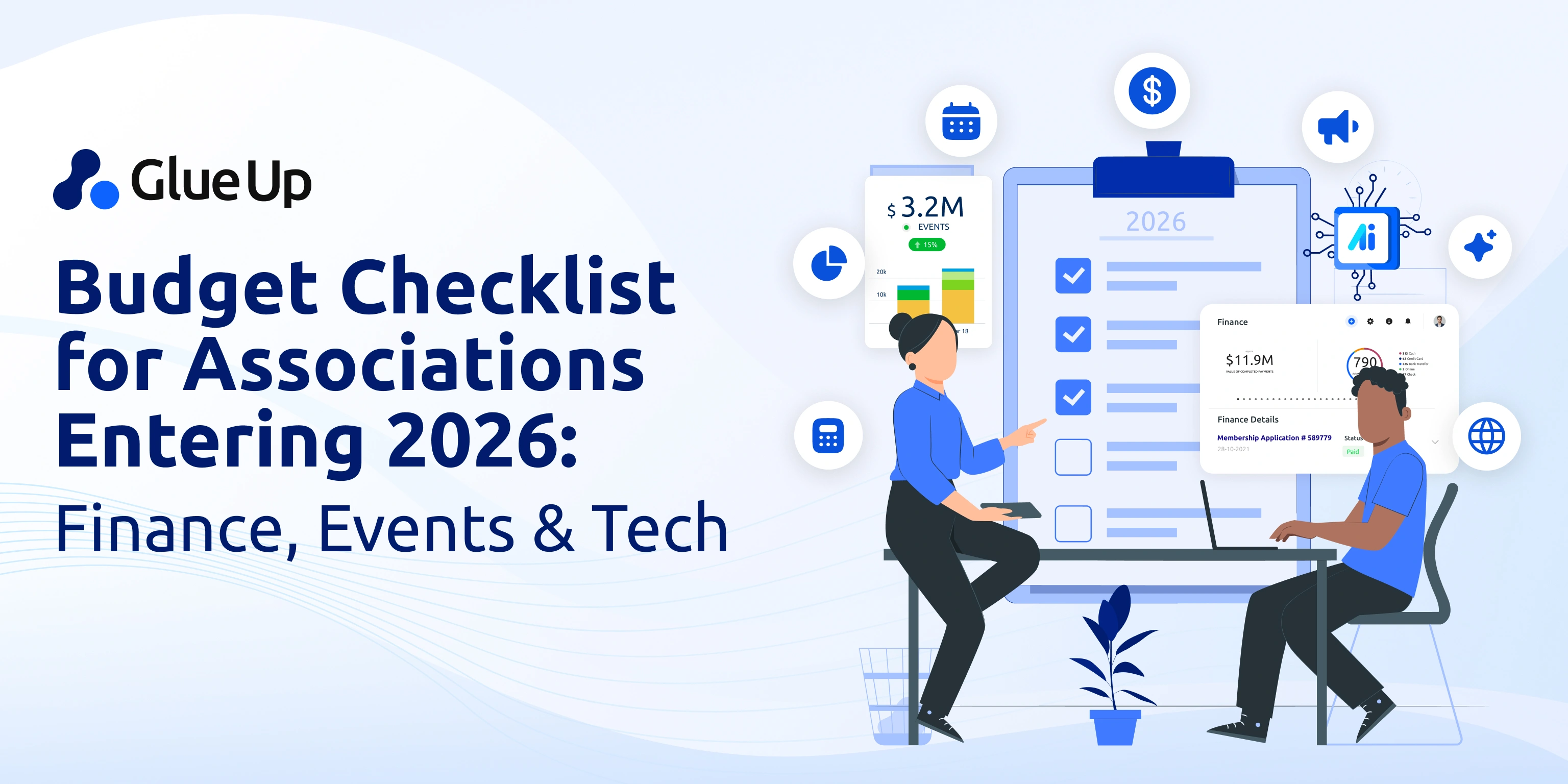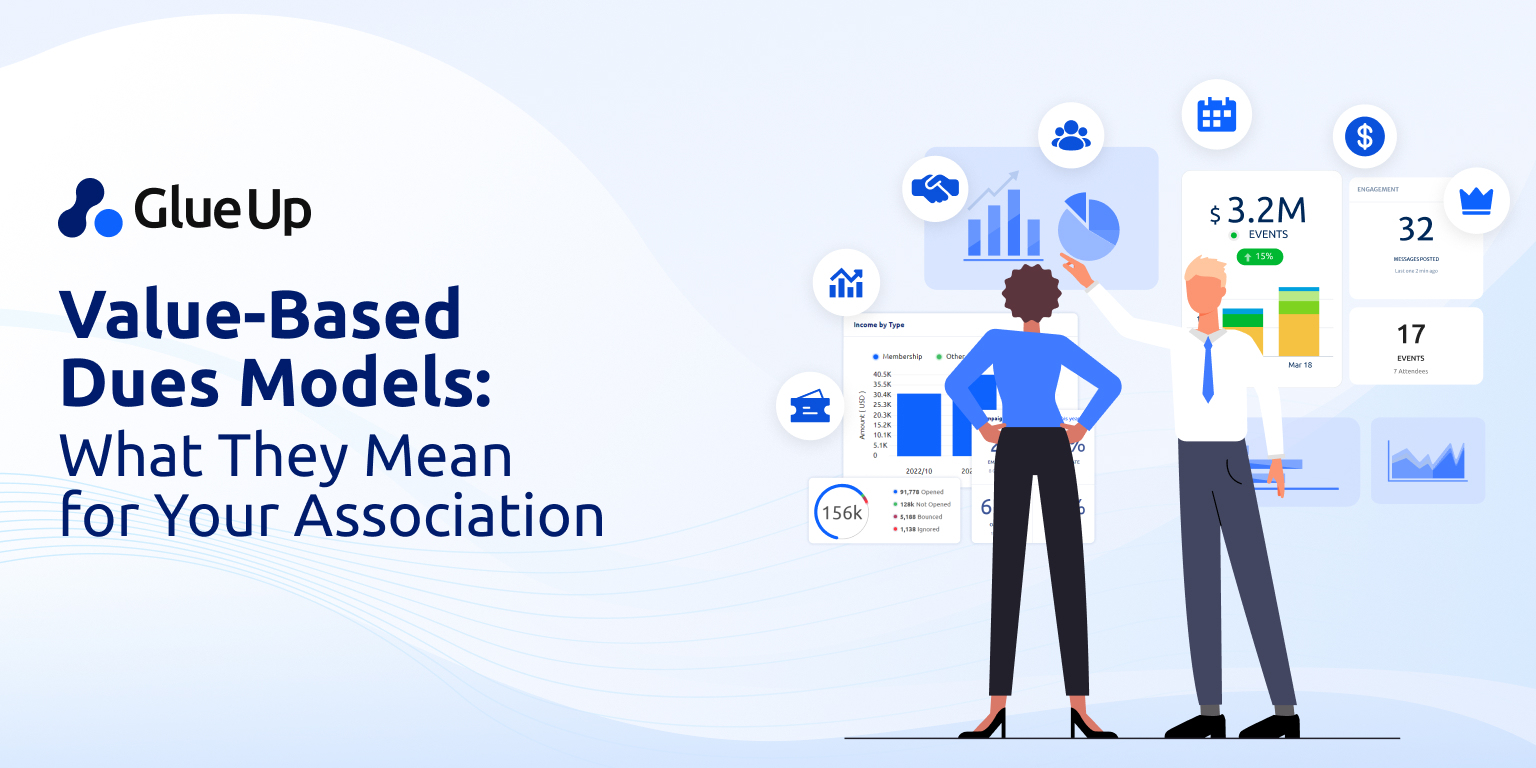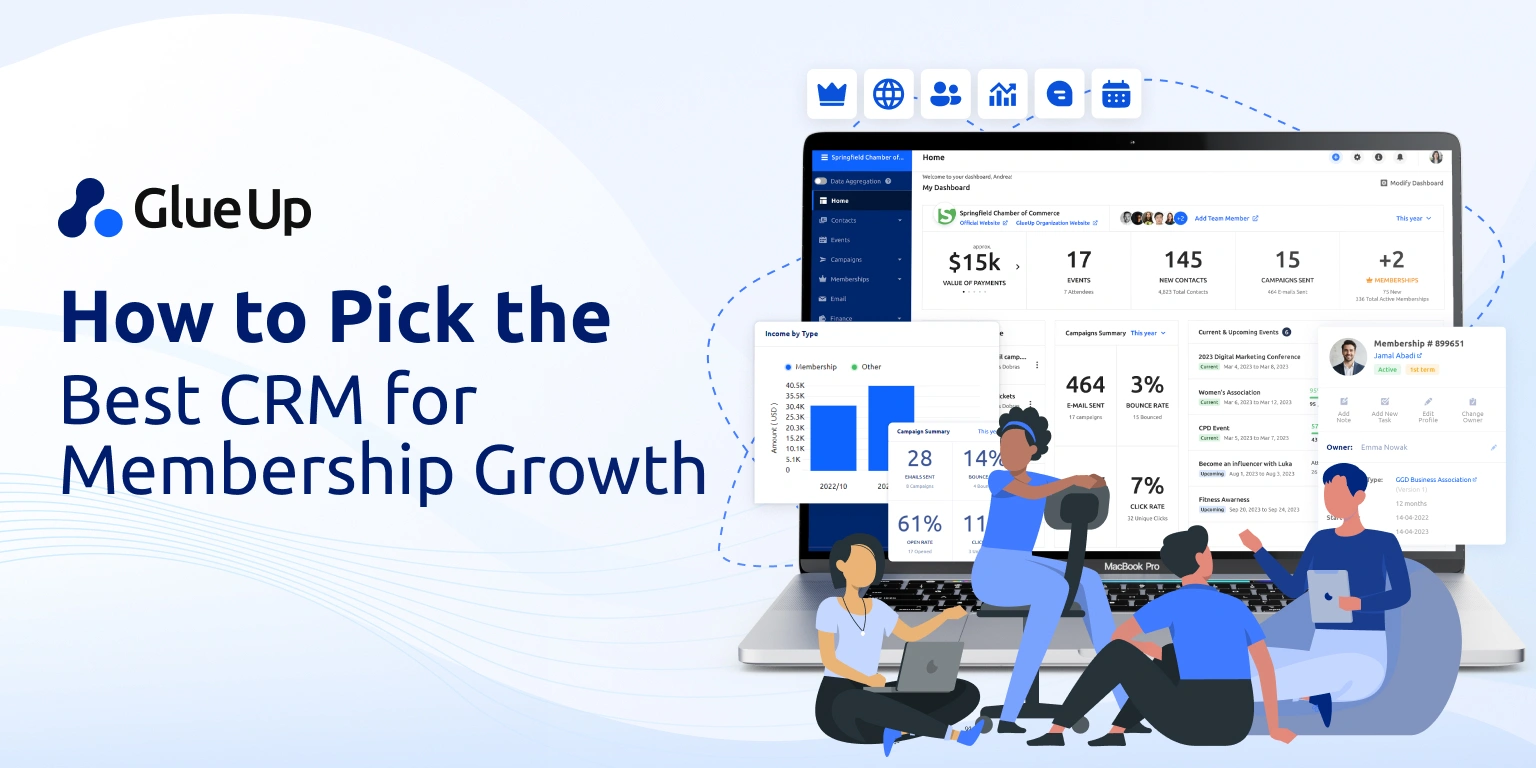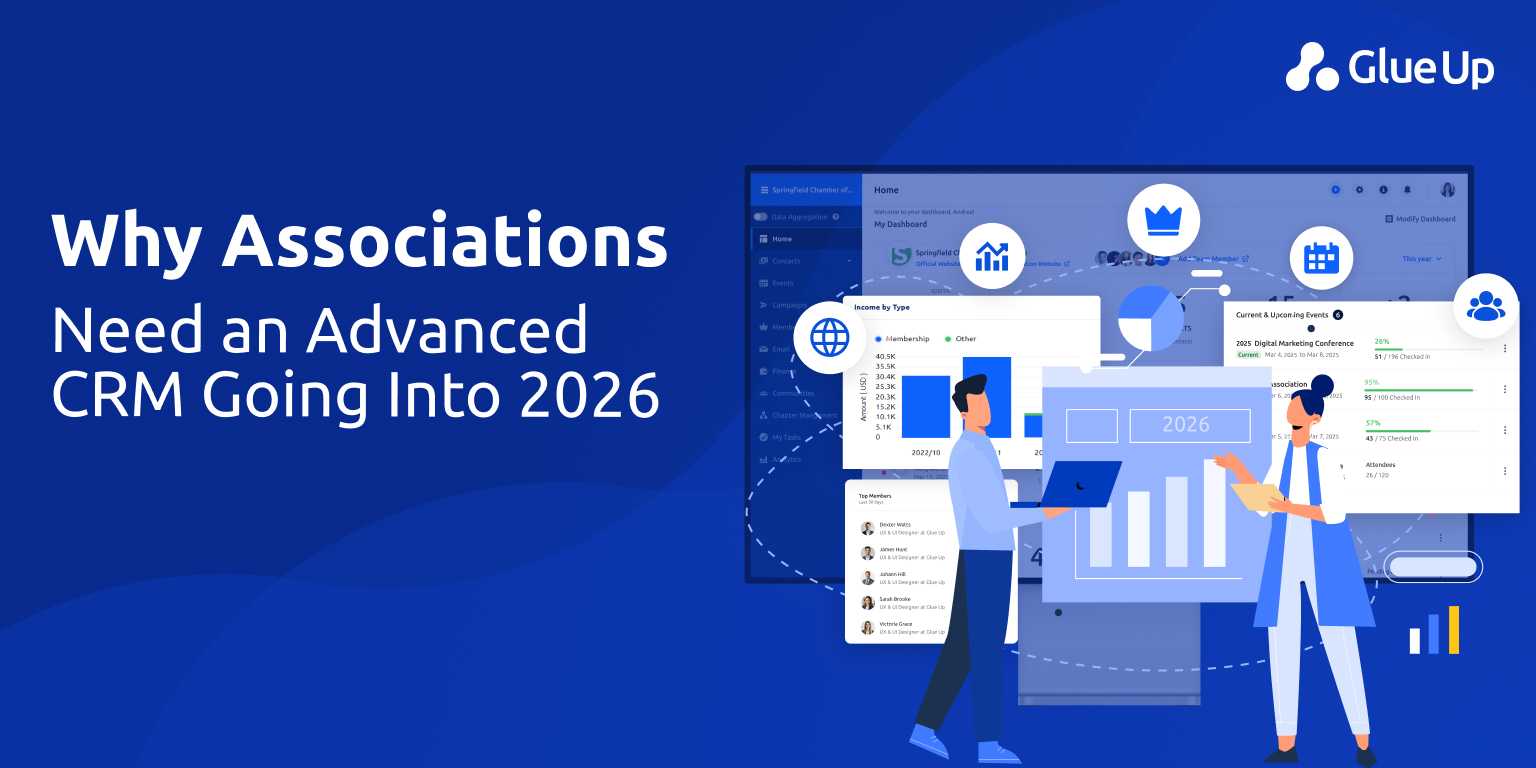
The 2026 budgeting cycle controlling outcomes, not cutting costs. As associations head into another year shaped by economic volatility, technology shifts, and rising member expectations, the right budget checklist becomes more than an accounting exercise; it’s a strategic roadmap for operational efficiency, growth, and resilience.
According to Forrester’s 2025 Planning Guide, high-performing organizations are moving from reactive to predictive budgeting models, integrating analytics and automation to strengthen fiscal visibility. For associations, that means budgets must now connect everything: membership revenue, event profitability, and technology investment.
Whether you’re managing multiple chapters, forecasting dues renewals, or evaluating ROI from digital tools, a well-structured 2026 budget checklist helps you plan not just for expenses, but for scalability.
In this guide, we’ll break down the essential budget categories that drive association performance: finance, events, and technology. We’ll also explore how platforms like Glue Up’s finance management software empower teams to unify reporting, automate invoicing, and forecast growth with accuracy.
For a quick overview of our platform, watch the video below and book a demo today to get started!
Key Takeaways
- Budgets in 2026 demand adaptability. Static, one-time forecasts are giving way to rolling, data-driven models that keep pace with changing member behavior and market volatility.
- Revenue segmentation drives smarter decisions. Breaking income into renewals, sponsorships, and events helps leaders understand performance and allocate resources strategically.
- Events must be treated as strategic investments. Linking event ROI to overall revenue forecasting ensures transparency and long-term sponsor retention.
- Technology is now a budgeting priority. AI, automation, and data integration aren’t optional — they define operational resilience and cost efficiency.
- Unified systems accelerate visibility. Platforms like Glue Up bring finance, membership, and events into one ecosystem, allowing teams to plan, execute, and analyze with confidence.
Financial Planning Essentials for 2026
If 2025 proved anything, it’s that static budgets don’t survive dynamic environments. Associations now operate in a landscape where dues, sponsorships, and event income shift rapidly alongside inflation, policy changes, and evolving member expectations. The 2026 budgeting process has to be adaptive, data-driven, and transparent enough to sustain board confidence.
Anchor Budgets in Real Revenue Intelligence
Start with a comprehensive audit of how your organization earned, allocated, and preserved resources in 2025. Move beyond high-level categories and break down revenue sources by membership renewals, event revenue, training programs, and sponsorship ROI.
This exercise identifies recurring strengths and temporary inflows, giving leaders the clarity to forecast realistically.
Forecast With Precision, Not Habit
Historical trends no longer provide reliable forecasts in an economy defined by volatility. Introduce scenario planning, sensitivity modeling, and quarterly rolling forecasts to create dynamic plans that evolve with your data.
Advanced forecasting techniques can help leadership model best- and worst-case conditions and respond before variance becomes loss. Harvard Business Review notes that continuous forecasting improves decision speed by up to 40%, a critical advantage for associations managing seasonal events or fluctuating membership cycles.
Reinforce Board Confidence Through Financial Transparency
Budgets fail when leaders can’t translate numbers into strategy. Build confidence by structuring every report to answer three board-level questions: Where are we now? What’s driving change? What’s the financial impact of each decision?
Use dashboard-based reporting and standardized documentation to provide this clarity. When financial data is traceable and consistent across departments, governance improves, oversight strengthens, and approvals move faster.
Event Budgeting and Revenue Optimization for 2026
Event revenue remains one of the strongest growth levers for associations, but it’s also one of the most volatile. As economic cycles tighten and audience behavior shifts, 2026 demands precision budgeting across both in-person and digital event formats. Leaders must rethink how they allocate spend, measure performance, and justify ROI to boards and sponsors alike.
Treat Events as Strategic Profit Centers
Events are no longer one-time line items; they’re recurring investments in brand visibility, membership growth, and sponsorship value. To budget effectively, segment event spending by purpose — member acquisition, sponsor engagement, or content delivery — and align metrics to each goal.
Leading experts in association event strategy suggest using tiered forecasting models that distinguish between direct revenue (registrations, sponsorships) and indirect impact (renewals, referrals, and media reach). This approach helps associations evaluate the full financial footprint of each event, not just ticket sales.
Prioritize ROI Tracking Across Formats
Hybrid and virtual events continue to play a significant role in 2026, but tracking their profitability requires more than attendance data. Budget for technology that measures attendee engagement, lead quality, and sponsor visibility across both digital and physical channels.
As outlined in Lineup’s event ROI framework, leading organizations now evaluate events using engagement-per-dollar metrics to gauge real performance. By integrating financial reporting tools early in the planning process, associations can capture granular insights and pivot spend before losses accumulate.
Optimize Sponsorship Forecasting and Allocation
Sponsorship remains a top funding driver, but without transparent ROI reporting, renewals suffer. Build renewal momentum by linking every sponsorship package to measurable outcomes such as qualified leads, digital impressions, or attendee conversions.
Forrester’s event marketing analysis emphasizes that sponsors increasingly expect “marketing-grade” analytics from associations. When boards see evidence of recurring value and predictable margins, budgeting transitions from reactive approval to strategic reinvestment.
Technology and Operational Budgeting for 2026
For most associations, technology will define whether the 2026 budget becomes a growth plan or a containment exercise. As software ecosystems expand and AI continues to reshape workflows, technology is no longer a cost center, it’s a measurable performance driver. The challenge lies in funding innovation without overextending budgets or fragmenting systems.
Budget for Integration, Not Expansion
The temptation to purchase new tools every cycle often leads to inefficiency and rising costs. Instead, focus on integration-first budgeting, where existing platforms are connected before new ones are added. This ensures operational continuity and eliminates duplicate licensing fees.
As highlighted in McKinsey’s digital reinvestment report, organizations that prioritize connected ecosystems see up to 20% higher returns on technology spending. For associations, this means syncing membership management, event platforms, and finance systems under one unified framework to create both savings and strategic alignment.
Build AI Training and Automation Into the Budget
AI adoption is accelerating faster than most leadership teams anticipated. From member communication to data analysis, automation is now critical to achieving scalability with limited staff. Budgeting for AI training, workflow automation, and predictive analytics should no longer sit in the “innovation” column but be a part of operational readiness.
A recent analysis by No Jitter emphasizes that many organizations underestimate the training costs tied to AI deployment. Associations can close that gap by reserving budget lines for internal training sessions, AI policy documentation, and pilot automation projects that deliver measurable ROI within 12 months.
Reinvest Savings Into Digital Resilience
As automation takes over routine tasks, the next logical investment is resilience, ensuring continuity across systems, data, and teams. Reinvest savings from process automation into data governance, cybersecurity, and infrastructure optimization.
The Harvard Business Review notes that digital resilience will increasingly determine organizational agility over financial capacity in volatile markets. For associations, this means protecting the member experience through systems that adapt as quickly as your strategy evolves.
Simplify 2026 Budget Planning with Glue Up
The strongest budgets are built on systems that connect information, people, and decisions in real time, not written in spreadsheets. That’s where Glue Up’s Association Management Cloud creates measurable impact. It’s designed for leaders who want every dollar, member, and event to work toward the same strategic outcome: sustainable growth.
Our global AI-powered engagement management platform unifies your financial operations, membership data, and event performance under one digital roof. With tools for automated invoicing, real-time forecasting, and integrated revenue reporting, finance teams can replace manual reconciliation with actionable insight.
Key modules powering your 2026 budget strategy include:
- Finance Management Software: Automates billing, forecasting, and expense tracking with precision and transparency.
- Event Management Software: Tracks ROI, attendance, and sponsorship revenue for every event in one view.
- Membership Management Software: Consolidates renewals, dues, and retention analytics for predictive growth.
- Email Marketing Automation Software: Reduces campaign costs by personalizing communication at scale using real-time data.
Together, these tools form a complete budgeting ecosystem; one that improves visibility, accelerates reporting, and ensures accountability across every department.
Book a demo today to see how Glue Up can help you turn 2026 budgets into growth roadmaps powered by automation, insight, and measurable performance.
Frequently Asked Questions
Quick Reads
- How to Build a Revenue Engine with Association Management Software
- Add-On Cart for Member Retention & Growth
- Simplify Multi-Currency Payment Posting for Community Chapters With Glue Up + Paygage
- AI Automation for Event Registration & Beyond
- Integrating AI into CRM for Membership Growth
- How to Build a Chapter Event Calendar
- What Is All-In-One Association Software?
- AI-Powered Member Check-In Software



